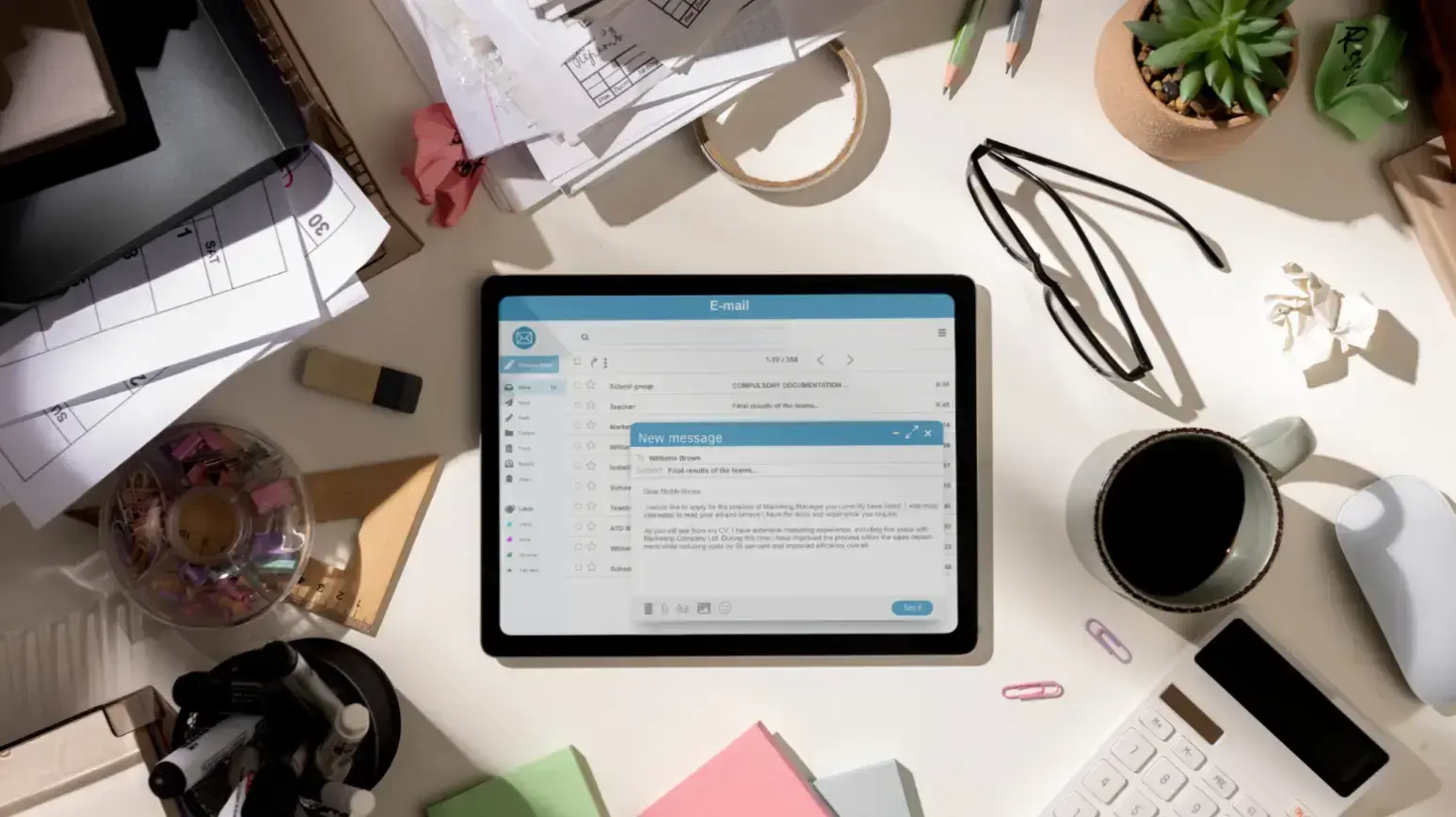If you want to learn how to get more value from your transactional emails, you're in the right place!
Transactional emails are an important part of the customer journey. They offer opportunities to build relationships, reinforce your brand, and even drive additional sales.
However, to get the most out of transactional emails, it's important to know what they are and how they can help.
Article Shortcuts:
- Understanding Transactional Emails
- 11 Types of Transactional Emails You Should Use
- Order confirmation emails: Reassuring customers & reducing support requests
- Shipping confirmation emails: Keeping customers excited & informed
- Delivery confirmation emails: Closing the loop & encouraging repeat purchases
- Account creation emails: Making a great first impression
- Password reset emails: Ensuring security & simplicity
- Invoice & billing emails: Providing clear payment details
- Subscription renewal emails: Reducing churn & increasing retention
- Return & refund confirmation emails: Building trust & transparency
- Account notification emails: Keeping users updated on important changes
- Double opt-in emails: Improving email list quality & engagement
- Product feedback requests: Collecting insights to improve your brand
- Best Practices for Optimizing Your Transactional Emails
- FAQs
Today, we'll show you eleven different types of transactional emails and share examples and best practices to help you optimize each one for maximum impact.
Let's dive in!
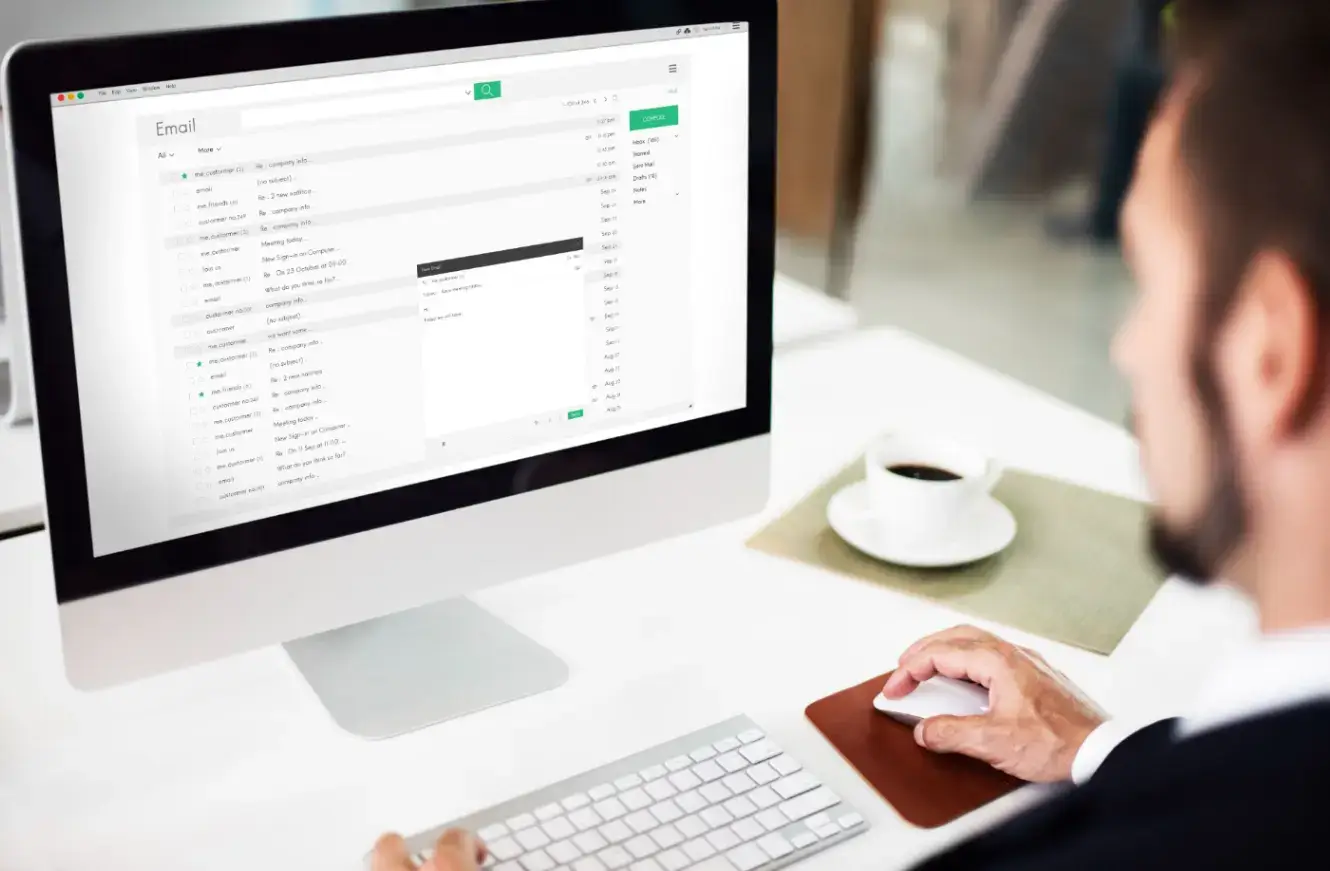
Source: Freepik
Understanding Transactional Emails
What exactly are transactional emails?
Put simply, transactional emails are automated messages sent to customers after they take a specific action on your website or app. Order confirmations, shipping notifications, and password resets are all transactional emails. But that's just the beginning.
These emails are characterized by their personalized content, timely delivery, and clear purpose.
Transactional emails should always provide detailed information about the specific transaction or action.
Because they are directly related to a customer's activity, transactional emails have incredibly high open and click-through rates, making them essential for brands across all industries.
When used correctly, transactional emails can help with customer retention, build brand trust, and boost sales. They are one of the best ways to turn first-time shoppers into loyal customers, and they offer opportunities for upselling and cross-selling related products or services.
The bottom line is don't underestimate the power of these seemingly simple messages in your email marketing strategy.
11 Types of Transactional Emails You Should Use
Now that you know a little more about transactional emails and why they matter, let's examine specific examples and how they're used.
1. Order confirmation emails: Reassuring customers & reducing support requests
Order confirmation emails are, without a doubt, the most important type of transactional messaging. They are designed to reassure customers that their purchase was successful and provide essential details about their order.
Imagine for a second how you would feel if you bought something online and weren't sent an email confirming the order. The odds are that you'd check your bank account, see the money gone, and then contact customer support to ask what's going on with your order.
A typical order confirmation email includes the order number, a list of purchased items, the total cost, billing and shipping addresses, and an estimated delivery date.
Best practices for order confirmation emails include using a clear and concise subject line, providing all essential order details, and offering clear next steps, such as tracking the order or contacting support.
Adding a personalized touch, like addressing customers by name or recommending related products, can further improve their experience.
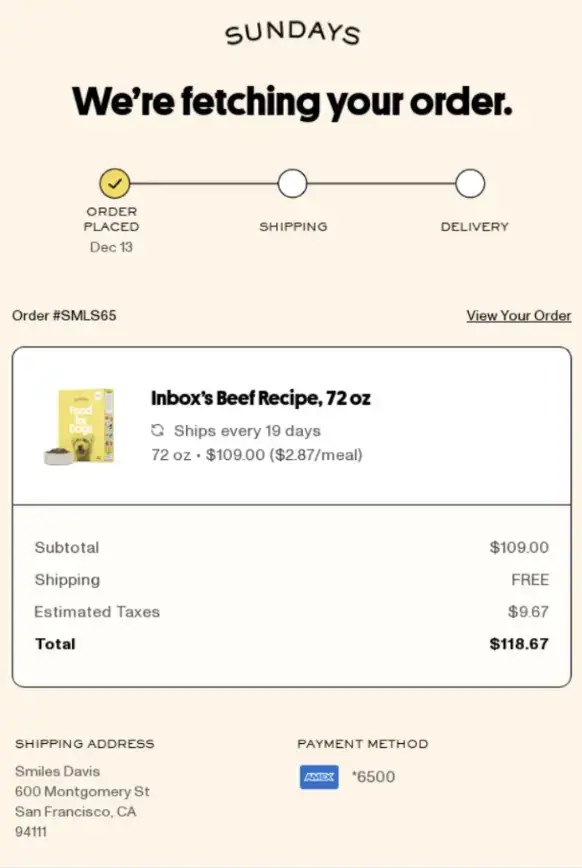
Source: Really Good Emails
2. Shipping confirmation emails: Keeping customers excited & informed
Shipping confirmation emails is a great way to build excitement. I bet you get excited every time you get a "Your order has been shipped!" email. Well, your audience feels the same way!
They let your customers know their order is on its way and bridge the gap between purchase and delivery. These emails keep customers informed, which is absolutely essential for earning their trust.
Below is a great example of this type of email. The confirmation message is clear, concise, and on-brand. The customer can see exactly what to expect and easily track the order from the company to their doorstep.
When creating these types of transaction emails, always strive for that level of clarity in your shipping emails.
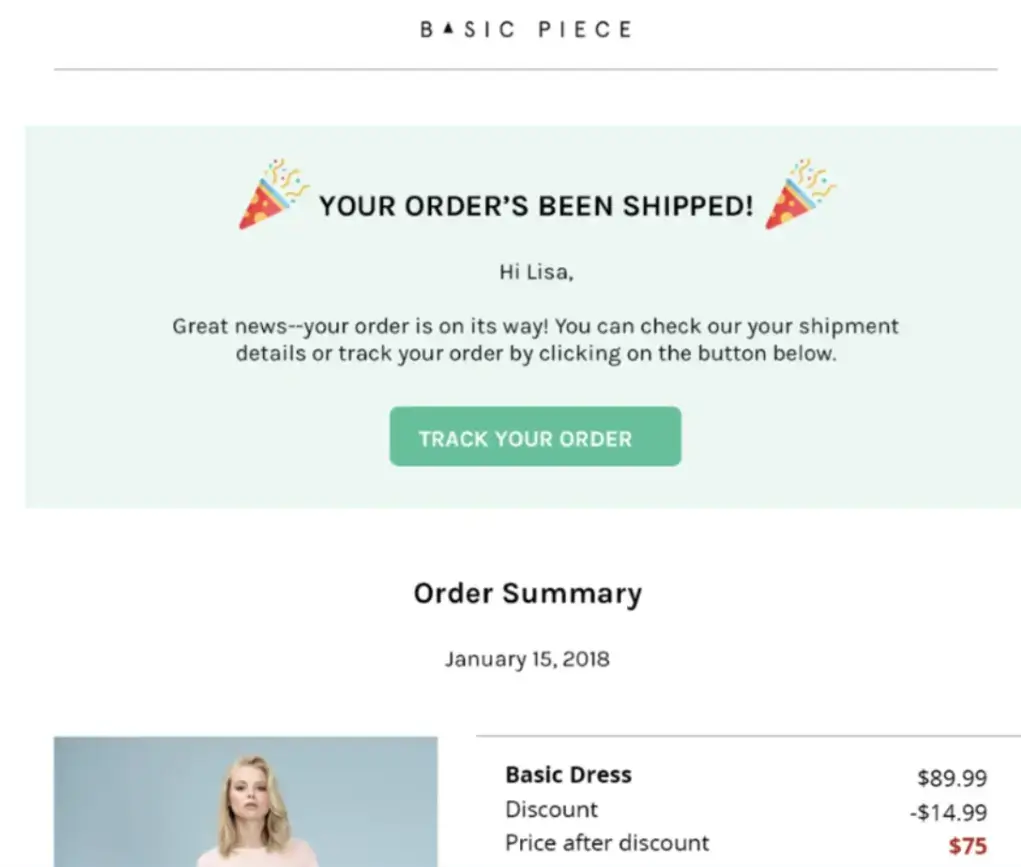
Source: GoDaddy
3. Delivery confirmation emails: Closing the loop & encouraging repeat purchases
Delivery confirmation emails close the delivery loop and let people know that their order has arrived safe and sound.
Look at how Dr. Squatch handles these emails. They're simple, direct, and informative. They confirm the delivery, provide a quick overview of the order, and offer options if the customer needs assistance.
That's the exact type of experience you want to replicate.
Aim for that level of clarity and efficiency in your delivery confirmation emails. Remember, these emails can also be a great opportunity to encourage repeat business.
Consider including a discount code or a personalized product recommendation for their next purchase to increase the odds of a future sale.
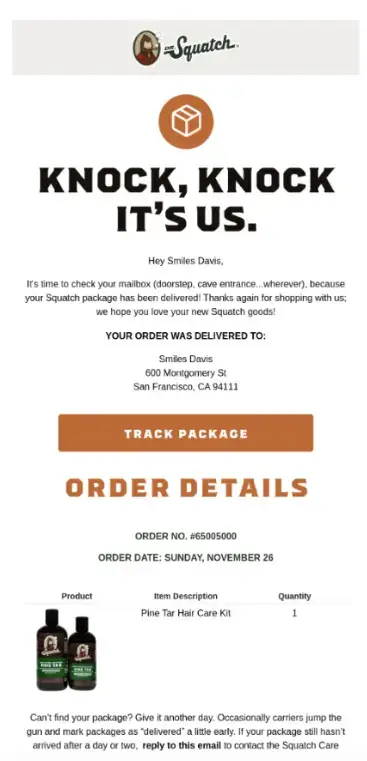
Source: Really Good Emails
4. Account creation emails: Making a great first impression
As the name implies, account creation emails are designed to welcome new users and confirm that they've set up their accounts. They're often the first formal interaction after signup and set the tone for future interactions.
A strong welcome email can make a big difference in how users perceive your brand.
These emails should include a friendly greeting, confirmation of the account details (username or email address), and clear next steps, such as how to complete their profile or start using the product or service.
Grammarly does this really well. Their account creation email is clean and visually appealing and reinforces what they're all about. It guides users through the next steps and encourages them to start using the product right away.
Strive for that level of engagement in your own account creation emails. Make new users feel welcome and empowered to get started. This is a prime opportunity to highlight key features or offer a helpful tutorial.
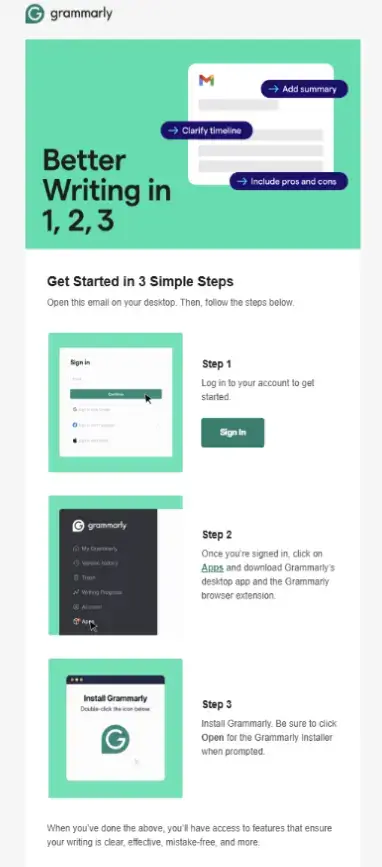
Source: Grammarly
5. Password reset emails: Ensuring security & simplicity
Password reset emails provide a simple and secure way for folks to change their passwords, which we've all needed to do at one point or another.
These messages should include a clear explanation of the request, a unique and time-sensitive link, and instructions on what they need to do next.
Consider how Zapier handles password reset emails. They're straightforward, secure, and user-friendly and explain the reason for the email.
Do your best to emulate this clarity and security in your own password reset emails. An accessible password reset process can significantly improve user trust and confidence in your brand.
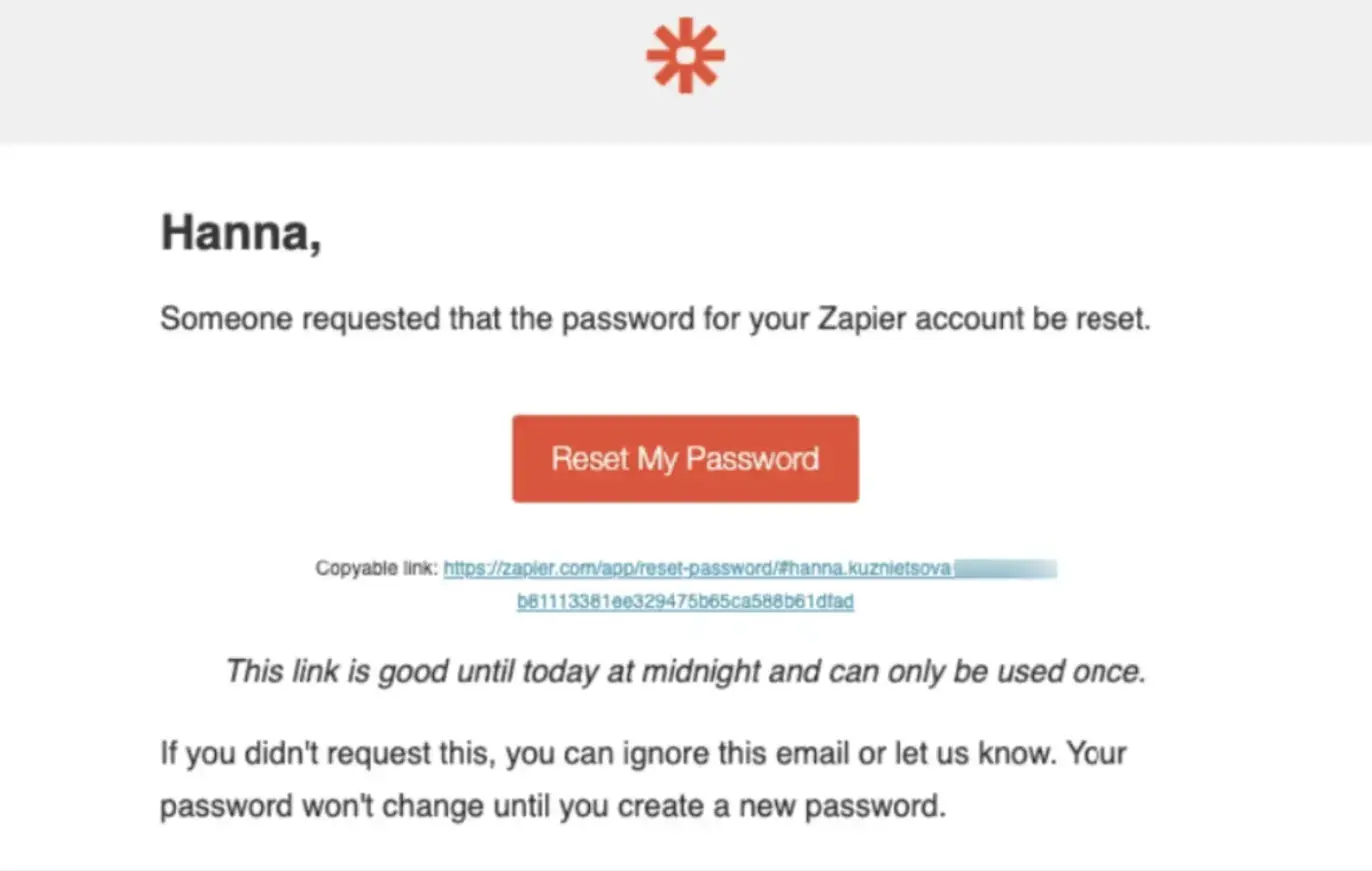
Source: Stripo
6. Invoice & billing emails: Providing clear payment details
Clear, accurate billing is the cornerstone of any successful business. Invoice emails are a type of transactional email that does just that.
These emails must provide the essential details: invoice number, billing period, itemized charges, total amount due, payment options, and the due date. Ensure all the details are crystal clear since no one likes a confusing bill.
Here’s an example of an invoice email that’s clean, professional, and easy to understand. They clearly outline the charges and due date, which makes this process super easy and painless for customers.
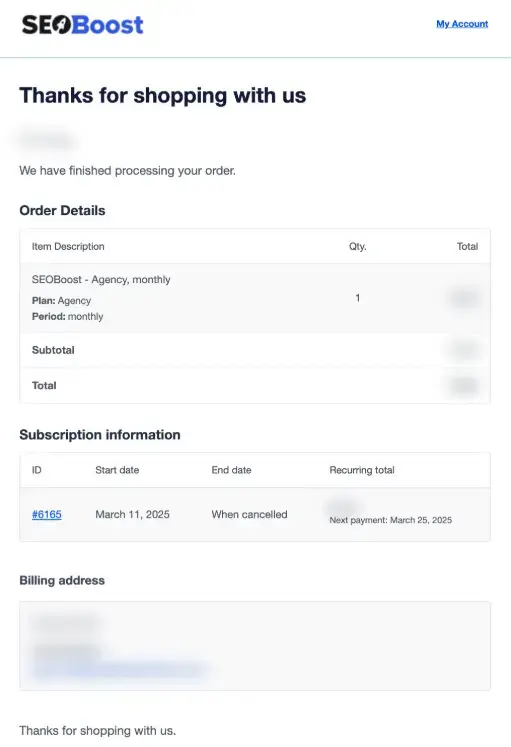
Source: SEOBoost
7. Subscription renewal emails: Reducing churn & increasing retention
Subscription renewal emails are essential for businesses that use a recurring revenue structure. These emails remind subscribers that their subscription is about to expire and offer a pain-free way to renew.
When done correctly, a well-crafted renewal email can significantly reduce churn and skyrocket your conversion rate.
These transactional emails should include the subscription details (plan name, cost), the renewal date, and clear instructions on how to renew. It's also important to highlight the benefits of continuing their subscription.
YouTube, for example, sends excellent subscription renewal emails. They clearly remind users of their upcoming renewal date and make it incredibly easy to update their payment information or change their plan.
You can replicate this in your own subscription renewal emails by making it effortless for subscribers to renew while highlighting the benefits of your product. A little proactive communication can go a long way in retaining valuable customers.
Source: Really Good Emails
8. Return & refund confirmation emails: Building trust & transparency
Return/refund confirmation emails provide peace of mind to customers who have decided your product isn't for them or had an issue with their purchase.
These emails show the customer that their request has been received and processed, which helps to manage customer expectations and reduce anxiety.
These emails should include the return/refund confirmation number, the original order number, details of the returned items, the refund amount (if applicable), and the expected processing time.
Look at how Amazon handles these emails. They're clear, concise, and reassuring. They confirm the return and provide details about the refund.
You should work toward that same level of clarity and reassurance in your own return/refund confirmation emails. A positive return experience, even if the customer isn't keeping the product, can build trust and encourage future purchases.
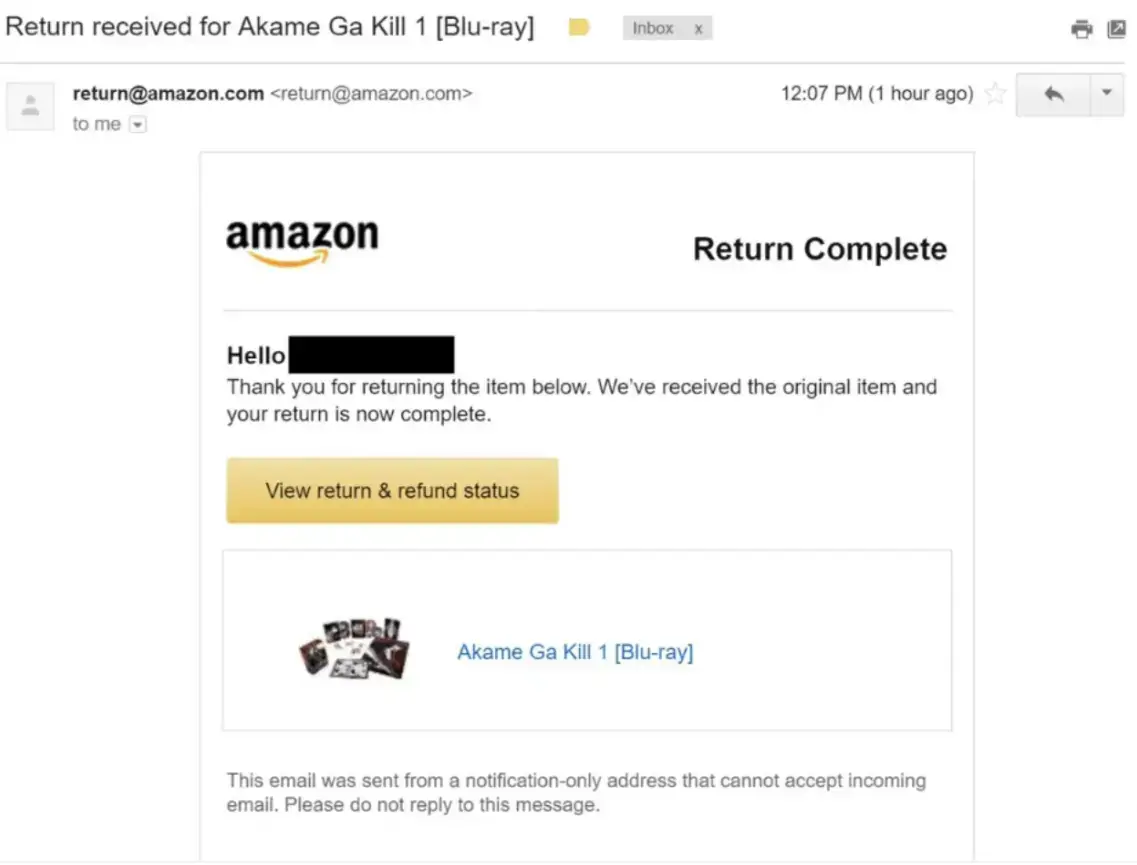
Source: Patch
9. Account notification emails: Keeping users updated on important changes
Account notification emails keep users informed about important changes or updates. These can include security alerts, profile updates, billing changes, or other relevant account activity.
Sending these alerts out is crucial for keeping your customers in the loop when something changes. This is great for people who actually made a change, but it's also very helpful for people who didn't request a change.
For example, an email explaining that a login was attempted from a new device can cue customers that they should change their password or enable multi-factor authentication.
These emails should clearly explain the reason for the notification, provide relevant details about the change or update, and offer clear instructions if any action is required by the user.
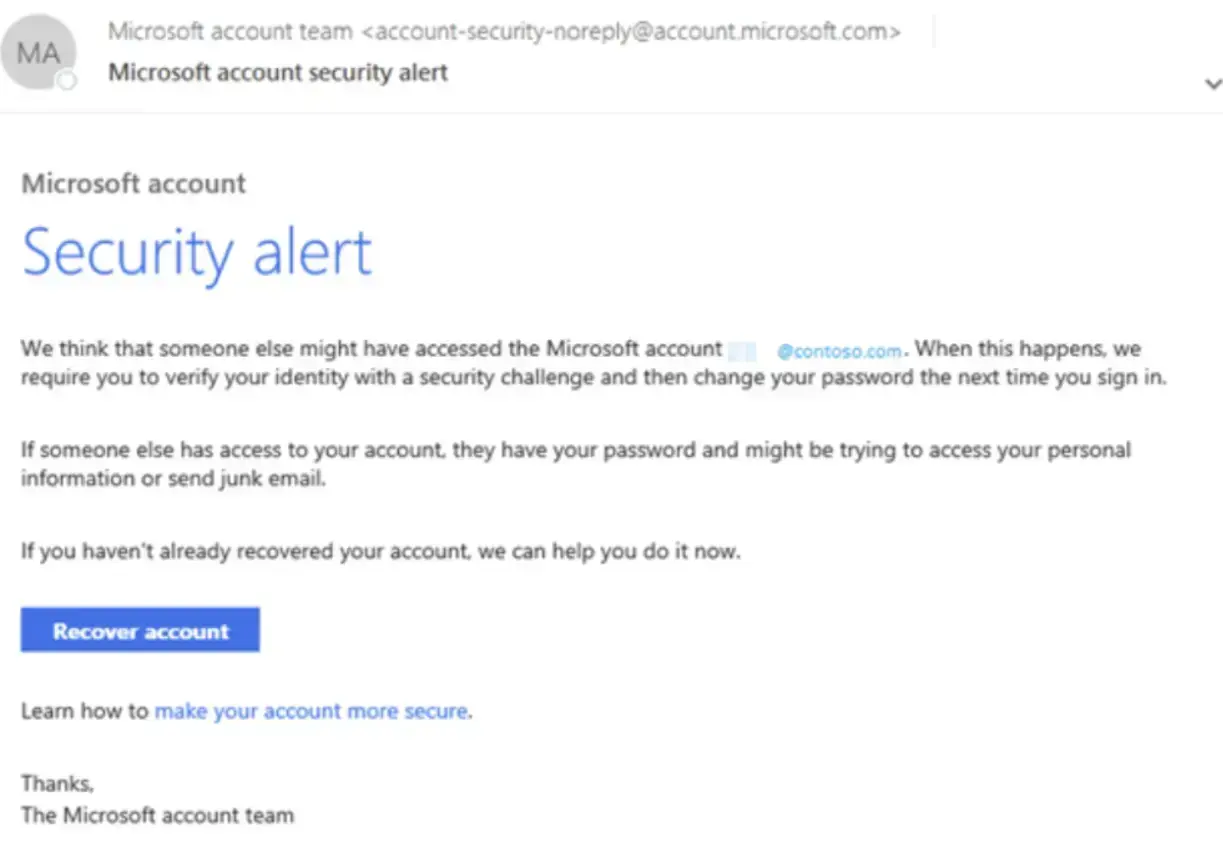
Source: Microsoft
10. Double opt-in emails: Improving email list quality & engagement
Double opt-in emails require users to click a link to confirm their email address so they can finish signing up. This step will help you build a high-quality lead list and reduce the chances of emails bouncing or spam complaints.
These emails should clearly explain the purpose of the double opt-in process, provide a clear confirmation button, and thank the user for subscribing.
Keep the email concise and focused on getting the user to confirm their subscription. You can send an official welcome email as the next part of your email sequence.
Slack effectively handles double opt-in emails. They provide clear instructions and make it easy for users to confirm their subscription with a single click.
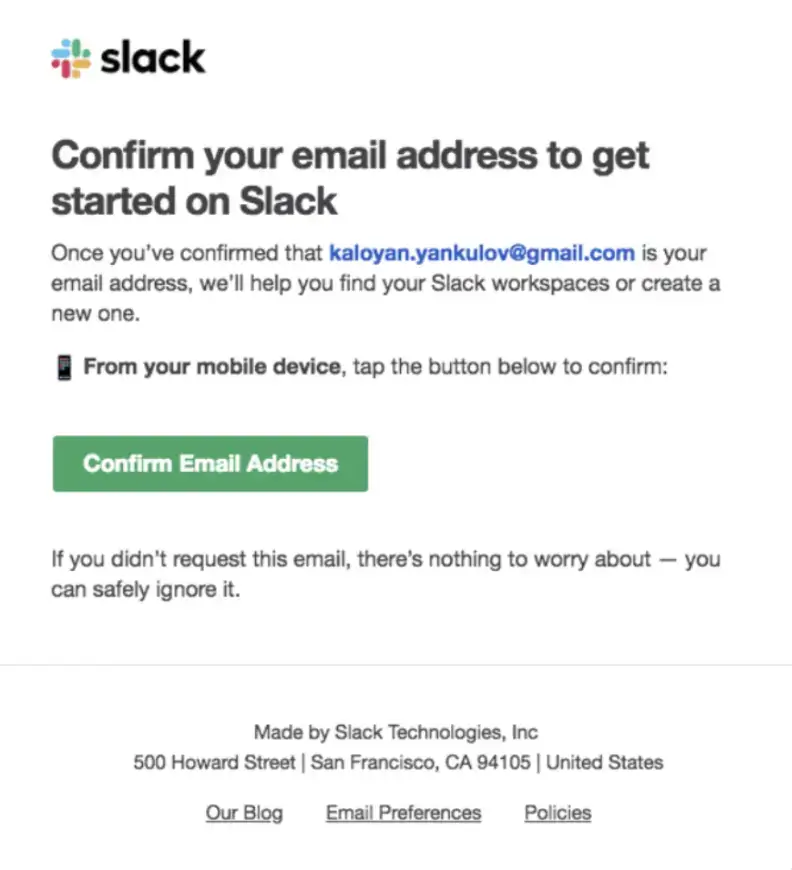
Source: FreshLearn
11. Product feedback requests: Collecting insights to improve your brand
Product review/feedback request emails are a valuable way to gather insights and improve your brand. They are typically sent a week or two after the customer receives their order or starts using your product.
Customer feedback is essential for building social proof across your site, finding ways to improve, and ultimately creating better products and services.
These emails should clearly explain the purpose of the feedback request, make it easy for customers to leave a review or provide feedback (e.g., by including a prominent button or link), and thank them for their time and input.
Many e-commerce platforms, like Chewy, send effective product review requests. They make it simple for customers to rate their purchases and provide additional feedback, contributing to a valuable pool of customer insights.
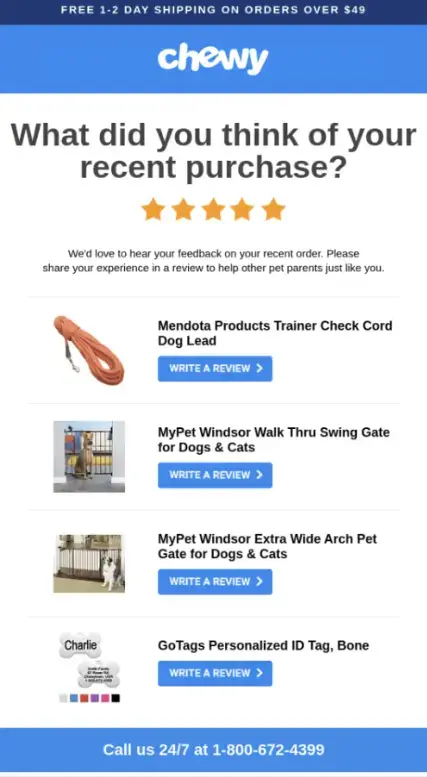
Source: Really Good Emails
Best Practices for Optimizing Your Transactional Emails
- Branding and Design Consistency: Maintain a consistent visual identity across all your transactional emails. Use your brand colors, fonts, and logo to reinforce brand recognition. This creates a better customer experience and strengthens your brand image.
- Mobile Optimization: Ensure your transactional emails are mobile-friendly. Most people check their email on their phones, so your emails must be easily readable and navigable on smaller screens.
- Clear and Concise Language: Use clear, concise language that is easy to understand. Avoid technical jargon or terms that might confuse or overwhelm your audience. Get straight to the point and provide the essential information clearly and efficiently.
- Personalization and Segmentation: Personalize your transactional emails whenever possible. Over 80% of people say they're more likely to engage with personalized emails. Use the customer's name and tailor the content to their specific actions or preferences.
- Testing and Optimization: Make testing and optimizing your transactional emails a priority. You'll want to A/B test different subject lines and calls to action and copy them to see what performs best. Regular testing is one of the best ways to improve your click-through rate.
- Legal Compliance: Your transactional emails should always comply with legal regulations, like CAN-SPAM and GDPR. This includes providing clear unsubscribe options and honoring unsubscribe requests promptly. Staying compliant protects your business and maintains user trust.
FAQs
1. What's the difference between a transactional email and a marketing email?
Transactional emails are triggered by specific customer actions (like purchases or account changes) and provide essential information related to that action. Marketing emails, on the other hand, promote products or services and are typically sent to broader segments of your audience.
2. How can I improve my transactional email open rates?
Use clear and concise subject lines that accurately reflect the email's content. Personalize the subject line with the customer's name or order number. Also, ensure your sender name is recognizable and trustworthy.
3. Are transactional emails subject to spam regulations?
Yes, transactional emails are still subject to regulations like CAN-SPAM. You must include a vali

